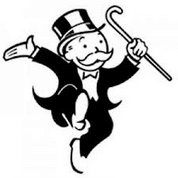
Cross-posted from the UK Conversation:
The announcement that rail fares will increase by up to 5.5% is yet another indictment of the failure of the country’s privatised railway industry. Railway privatisation was sold to the public on the basis it would “provide better value for money for the public who travel by rail”.
The government’s White Paper in 1992 that heralded the break-up and privatisation of Britain’s state-owned railway network ultimately promised a lot but in reality delivered very few benefits for the passenger or the tax payer. In particular, as far as rail fares were concerned, rail privatisation has led to anything but “better value” for the passenger.
Since privatisation, rail fares have been categorised as either regulated or non-regulated. The government was aware that passengers who commuted to work by train were a captive market, since there was usually no realistic alternative method of transport. They therefore made commuter services and some other types of longer distance tickets regulated to limit the ability of private train operators to impose exorbitant fare increases. But for other non-regulated types of tickets, operators would be able to charge whatever the market would bear.
Majority of fares not regulated
Contrary to the belief of most passengers, however, the majority of rail fares are not regulated in any way. Out of the total annual passenger income of £7.7 billion, about two-thirds of this revenue is from fares that are unregulated.
Even where there are regulated fares – as in some long distance off-peak return tickets – the train operators are increasingly able to apply ever more onerous time restrictions on the availability of trains in order to limit use of these cheaper tickets.
Since privatisation, the government has also allowed train operators to impose ever larger increases in fare income from regulated tickets. Originally, increases in regulated fares were kept below the inflation rate by using a retail price index (RPI) minus 1%. But, as state subsidises to the industry continued to soar to more than twice the level received by the former state owned British Rail, the government changed the pricing model.
Since 2004, to ensure the passenger carried a greater share of the cost of operating the railway network, tickets have been calculated and increased each year by the RPI plus 1%. (Although for 2013-14, for political expediency, the chancellor limited the rise to just the RPI only link.)
This year’s rise
Given that the RPI is now 2.5%, all regulated fares will increase by 3.5% in January 2015. But the fares framework also allows train operators to impose further fare increases on some routes. Under a so-called “fares flex” policy, train companies can target specified routes for a fare increase surcharge – provided, in total, the general pricing model is still met.
This additional flexibility originally permitted another 5% increase. However, the government subsequently changed the “fares flex” regime to a 2% increase over and above the general pricing model. This is why some fares may increase by a full 3% over the RPI, reaching 5.5% on some routes.
The only way is up
There seems little evidence that the train operators are using their commercial freedom to offer “value for money” by lowering the increase on most unregulated fares. Quite the opposite. Since privatisation most unregulated fares have increased at a considerably higher rate than regulated fares across the network.
In practice, many journeys have no effective competition from road or air services to hold down the price of unregulated railway tickets. As a result, train operators can and do impose whatever fare increases they wish in order to extract as much revenue from customers as possible. Indeed, the government even persists in allowing train operators to use a pricing model based on the RPI – an index that is usually higher than the more widely used, but lower, Consumer Price Index.
Taking all types of fares together, train tickets have now soared 17.5% higher in real terms since 2003, with many of the unregulated fares increasing much more. So much for the forecasted benefits that privatisation would bring.
Wider industry malaise
While these fare increases are clearly important for passengers, they are merely reflecting a wider malaise of the railway industry. Rather than privatisation leading to downward pressure on fare levels, as predicted at the time of privatisation, the opposite has happened. The privatised and fragmented industry that was split up into more than 100 separate sectors has become a costly and dysfunctional business.
The income for the railways can only come from two sources: the passenger or the taxpayer. Unlike most other EU railways, UK governments of all parties have decided to reduce the level of state subsidies to the railways and shift more of the financial burden to passengers.
In 2008, the cost of operating the nation’s railways was shared roughly equally between the taxpayer and passenger. Since then the burden has shifted to the passenger who now funds two-thirds of the industry costs.
On top of this, there is more financial pain to come for the railway traveller. Over the next few years the Department for Transport has planned for the passenger to be required to carry up to three-quarters of the industry’s costs.
Passengers paying these higher fares will find little consolation in knowing that they are not just paying for a railway ticket; they are also paying for the structural, financial and operational failure of an industry that should never have been privatised.
Article by John Stittle, Senior Lecturer in Accounting at University of Essex

